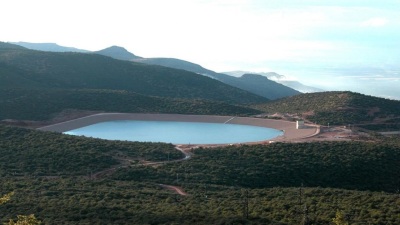
Woven Geotextile Vs Non-Woven
Geotextiles are used to increase the stability of the soil. They are man-made materials, usually made of polyester or polypropylene. They have five main functions: 1.) separation 2.) reinforcement 3.) filtration 4.) protection and 5.) drainage.
Geotextiles allow water to pass through but prevent other fine particles and soil from going through. Therefore, they consolidate and strengthen the base layer, making it a trustworthy foundation. They can be used for land reclamation, water erosion control, retaining walls, and steep slopes.
Geotextiles can be divided into woven geotextiles and non-woven geotextiles according to different production processes.
Woven Geotextiles
Manufacturing
The woven geotextile is made of new polyester or polypropylene particles, with a certain proportion of carbon black masterbatch, anti-oxidants, UV absorbers, and stabilizers, and is manufactured by directional drawing and weaving.
Advantages
1. Woven geotextiles are plastic-like in feel and appearance.
2. Woven geotextiles provide higher bearing capacity, making them an ideal choice for heavy applications such as road construction.
3. Woven geotextiles are known as tensile strength, which is the resistance of the material under tension.
4. Woven geotextiles are suitable for civil applications by providing separation and reinforcement.
5. Other desirable properties of woven geotextiles include corrosion resistance and long-term durability.
6. It is usually a cheaper and more economical option.
Disadvantages
1. The elongation of woven geotextile is between 5% and 25%.
2. Woven geotextiles have limited drainage and filtration capacity.
3. They have poor water permeability and low flow-through rate, so they are not the best choice for drainage works.
Applications
1. Highways
2. Residential streets
3. Parking lots
4. Beneath driveways
5. Airport runways… and more
Non-Woven Geotextiles
Manufacturing
The most common method of making nonwoven geotextiles is needle punching. Needle-punched non-woven geotextile is made of a large number of small fibers, which are interlocked together by pricked needles. No weaving or hand construction is involved.
Advantages
1. Non-woven geotextiles are widely used in separation and filtration applications.
2. Non-woven geotextiles have good durability and strength.
3. Non-woven geotextiles have good permeability and high flow rates.
4. Non-woven geotextiles are more like felt in feel and appearance.
5. The elongation of non-woven geotextiles is greater than 50%.
6. They are best suited to projects requiring protection, filtration, separation, and drainage.
Disadvantages
1. Non-woven geotextiles have low tensile strength and are less suitable for reinforcement or stabilization projects.
2. Non-woven geotextiles break down faster than woven geotextiles.
3. Non-woven geotextiles are not as strong as woven geotextiles.
Applications
1. Stormwater drainage systems
2. Roadway underlayment
3. Foundation stabilizers
4. Canal construction
5. For projects requiring soil separation and infiltration… and more







